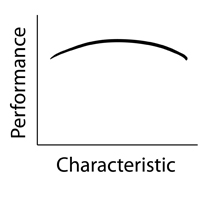Over the past several months I have had the opportunity to observe individual’s behavior when I have told them that I was unable to do something for them or chose not to purchase their product or service. The responses have ranged from quiet anger to ignoring me to an attitude that continues to engage with me in hopes that we will be able to work together in the future.

Observe Your Team Member’s Behavior
You may have had similar experiences when you have had to give a team member bad news. Their reaction tells you a lot about their personal beliefs, maturity, and ability to work through problems. Suppose you have a team leader position open and two candidates for the job. You discuss the position with the two individuals, give it some consideration and make your choice. Once you deliver the bad news to the person who is passed over for the job, observe their behavior. Do they handle it appropriately and ask about future possibilities or get upset over sour grapes? If it is the latter, then you probably made a good choice and will want to reconsider making a similar future offer. If it is the former then you know you’ve got someone with a clear head and positive attitude.
I have found that almost uniformly managers procrastinate in confronting difficult situations or delivering bad news. I often counsel them to look beyond the discussion to the positive aspects the outcome will bring. In addition, you can look at them as situations in which you will learn more about your team members. I’ve also found that, sadistically, some leaders will invent bad news to test an individual’s response and loyalty.
Your Behavior When you Receive Bad News
Similarly, what is your behavior when you receive bad news? Do you try to find a positive element and continue to move forward? Most likely your boss is observing your behavior as well.
While inside you may be angry or struggling with disappointment, learn to cultivate a positive attitude that all situations—positive and negative—bring learning. There is something positive in every situation and it is our job to figure out what it is.
Concepts:
- Observe your team member’s behavior in response to bad news
- Assess the values and beliefs behind the response
- Cultivate a positive learning attitude as a part of your response to bad news
Keywords: leadership, resilience, positive attitude, behavior observation
References:
- Carver, C. S. (1998). Resilience and thriving: Issues, models, and linkages. Journal of Social Issues, 54(2), 245-266.
- Csikszentmihalyi, M. (1996). Creativity: Flow and the psychology of discovery and invention. New York: HarperCollins.
- Fredrickson, B. L. (2001). The role of positive emotions in positive psychology: The broaden-and-build theory of positive emotions. American Psychologist, 56(3), 218-226.


